IRM Interns visit the Demilitarized Zone (DMZ) near Paju, South Korea
On Friday, October 6th, IRM interns Vaishnavi Pallapothu and Nicholas Kemble had the chance to visit the Demilitarized Zone (DMZ) near Paju-si, South Korea, through a tour organized for GCF colleagues by the Ministry of Unification Uni+Center Incheon. The DMZ was established in 1953 after the Armistice Agreement that brought the ceasefire to the Korean War, where both parties agreed to move their troops back by 2km into their respective territories to create a neutral buffer zone. The DMZ splits the Korean peninsula roughly into two halves and is 250km long and 4km wide.
Our first stop was the Odusan Unification Tower, which is situated at the northernmost part of the ceasefire line in the Western part of the peninsula. Established in 1992 as an educational establishment to provide information and spread awareness about the unification of North Korea and South Korea, it was constructed in the area where the Hangang River and Imjingang River meet and is about 2km away from North Korean territory. Here, we learnt more about the history and future of the two countries, the aftermath of the division, and the sorrow of separated and displaced families through various exhibits featuring artwork and letters by impacted people. We also got a glimpse of how North Korean society and cities look like through video simulations and informative videos. The highlight, however, was the observatory where we could take in panoramic views of the river and look over into North Korea through telescopes.
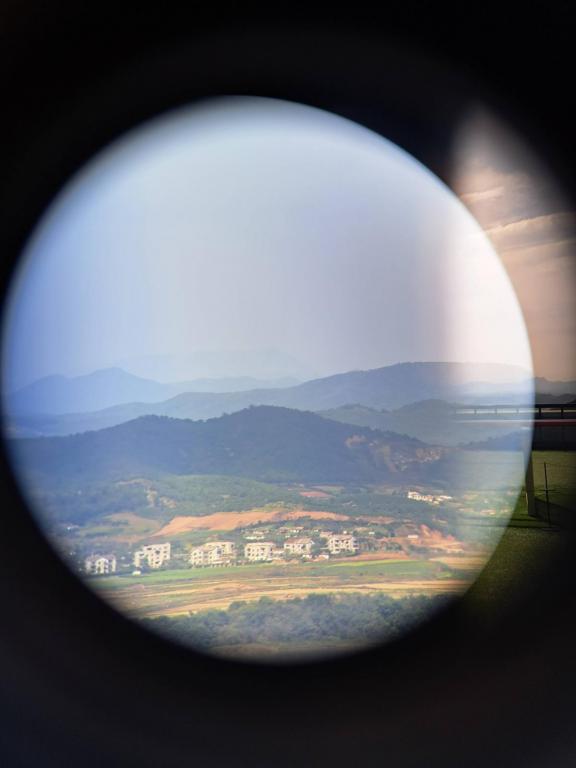
A peak into North Korean territory through the telescope at the Odusan observatory.
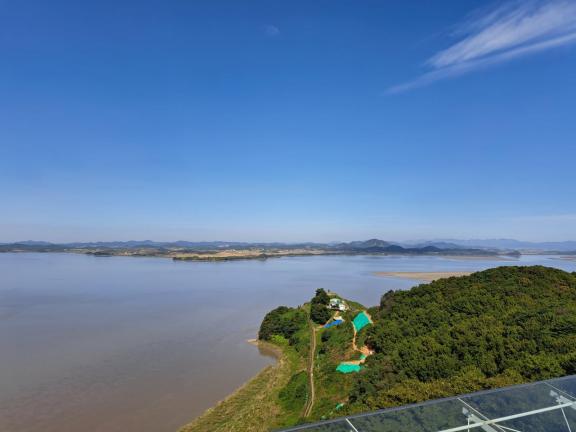
2km away from North Korea, the Odusan Observatory offers a good view of where the Hangang river meets the Imjingang river.
After a delicious lunch, we had the chance to walk around and explore Imjingak Park. We saw several monuments dedicated to memorializing the horrors of the Korean War as well as calling for peace and reunification. This included the ‘Peace Bell’ and a prayer wall where visitors can write their wishes and prayers for the Korean peninsula. The highlight here was the steam locomotive with more than 1000 bullet holes that were used to transport supplies during the Korean War. Registered as a Cultural Heritage in 2004, this train was preserved and now serves as a reminder of the tragic history of the division of North and South Korea, as well as a reminder of the horrors of war and violence.

We next traveled to the Inter-Korean Transit Office, the site where one would officially depart from the Republic of Korea and begin their journey into the North. Staff walked us through the transit process, as nearly 900 South Koreans were doing daily in the early 2000s. Here, the Ministry of Unification spoke to us about South Korean development and industry projects in North Korea and how the Transit Center served as an important junction for this. Though not in operation, the Transit Office serves as a powerful symbol of modern cooperation between the two Koreas.
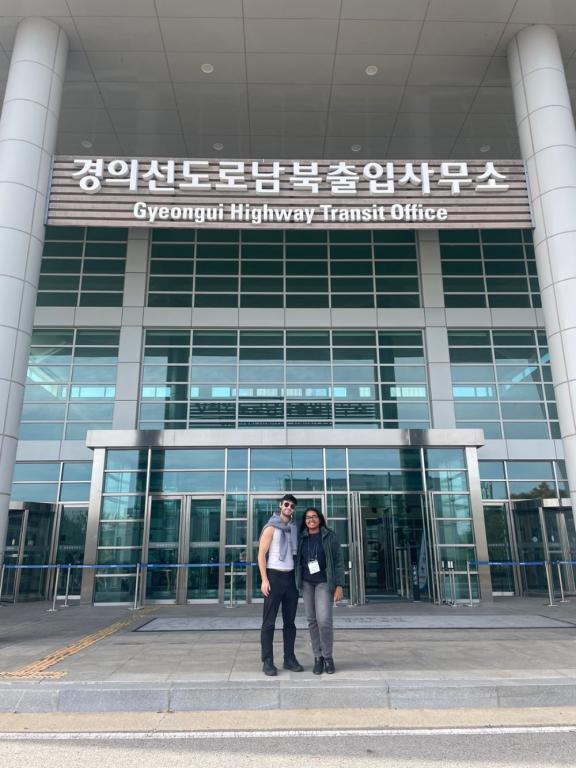
Lastly, we traveled to Dorasan station, the Northern-most train station in the Republic of Korea. The guides discussed how this station may one day be the connection for mobility between North and South Korea, and by extension, South Korea’s link by land to the rest of the Eurasian continent. With powerful symbols such as a piece of the Berlin wall and a clock counting to the exact second that the two sides have been split, it was clear this station is a physical embodiment for the hope of an interconnected Korean peninsula.
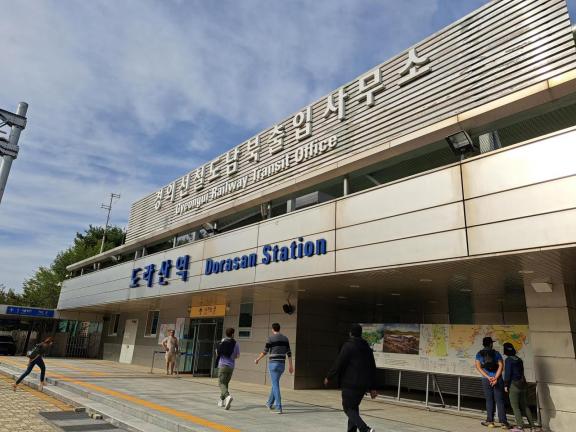

We thank the Ministry of Unification Uni+Center Incheon for an amazing and informative tour of the DMZ and the future outlook for cooperation between North and South Korea.
---
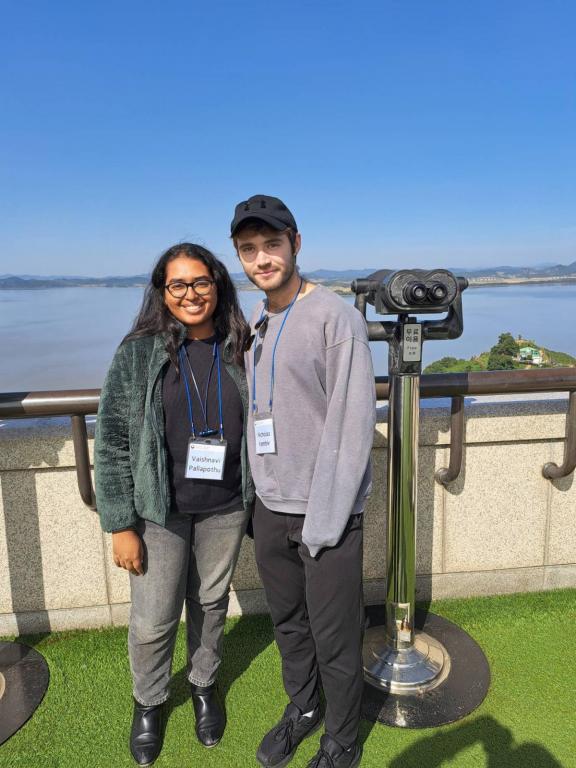
Blog prepared by IRM interns Vaishnavi Pallapothu and Nicholas Kemble.